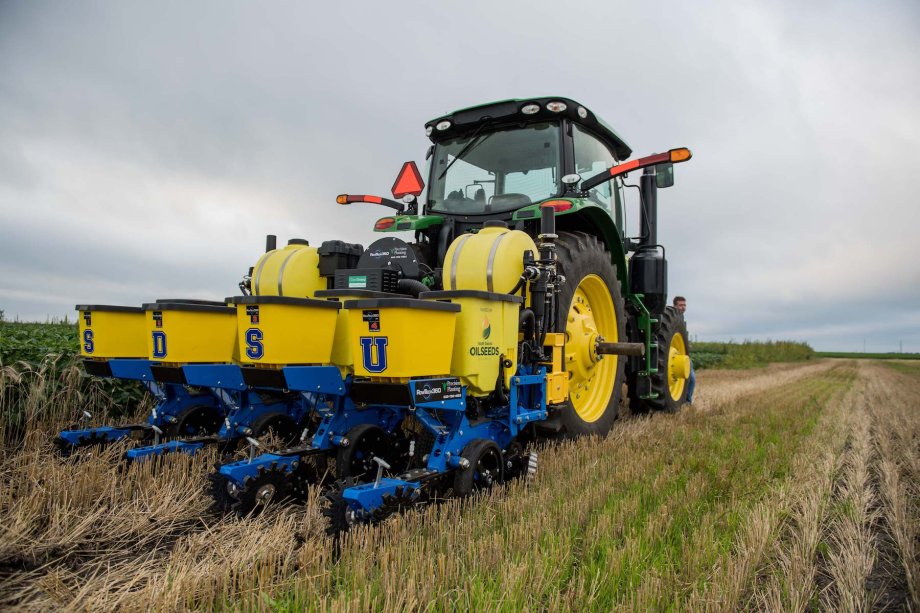
Precision agriculture technologies help optimize returns on crops and livestock while using resources as efficiently as possible. However, many farmers—specifically those in the Upper Midwest—still see many barriers to adopting PA practices, according to a new study from Tong Wang and Hailong Jin, associate professors in South Dakota State University's Ness School of Management and Economics.
"PA improves farming efficiency and management, but challenges prior to and following PA adoption can prevent farmers from widely using it," Wang said. "This research aims to understand the barriers perceived by farmers at different usage stages."

Precision agriculture is an overarching term for a wide array of farming technologies that aim to address the spatial and temporal variability of the field and promote farming efficiency. Some of the most widely used PA tools include: global positioning system receivers, yield monitoring and mapping, remote sensing via drones, and geographic information systems, among many other technologies.
Barriers to PA adoption and more
In the summer of 2021, Wang sent out a survey to farmers in South Dakota, North Dakota, Minnesota and Nebraska. More than 1,100 corn producers responded to questions regarding their views towards potential challenges posed by PA technologies. Of all respondents, 59% have adopted at least one PA technology from all three categories (georeferencing, diagnostic and application technologies), compared to 14% who have not adopted any PA technologies. Their concerns were organized into four categories: cost concerns, technology concerns, complexity concerns, and infrastructure and support concerns.
"If challenges faced by producers are not addressed, it could constrain the widespread adoption of PA technologies," Wang said.
Producers agreed that cost concerns, including initial investment costs, annual subscription costs for software, maintenance, and operating costs, were the top issue in regard to PA technology adoption. Of all producers, 60% felt that PA equipment and services were too high. Producers who had not adopted any forms of PA were more likely to say costs were the highest barrier to entry. Costs became less of an issue for producers who were more experienced with PA tools.
To overcome this barrier, the researchers theorized that monetary support, in the form of farm loans and subsidies, for new adopters of PA technology as a possible solution.
For farmers experienced with PA technologies, one of the biggest concerns was brand compatibility. Data privacy is also one of the major concerns regardless of the adoption status.
Data shows that age, farm size and education all play a role in the perceived barriers to adoption.
"The results from this study convey that producers with varying experience in PA technologies have different views regarding the main challenges towards PA usage and adoption," Wang said.
Previous research has shown the adoption of PA technologies also has public benefits. These include decreased fuel consumption, reduced greenhouse gas emissions and improved water quality in surrounding waterways due the efficient usage of fertilizers and pesticides.
"Findings from this study can aid PA stakeholders in identifying target groups, tailoring future development, research and outright efforts, and ultimately promoting efficient PA usage on a broader scale," Wang said.
- Contact:
- Telephone number: 605-688-6161
Republishing
You may republish SDSU News Center articles for free, online or in print. Questions? Contact us at sdsu.news@sdstate.edu or 605-688-6161.

